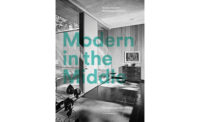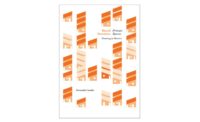In her new book, Brave New Home, Diana Lind, executive director of the Arts + Business Council of Greater Philadelphia, and occasional RECORD contributor, delves into her fundamental belief that many problems besetting America connect to the historic fixation on the single-family house. Even before the pandemic, 38 million households in the United States—nearly one in three—were “cost burdened,” meaning they paid more than 30 percent of their income on rents or mortgages, and homelessness has only been growing in cities across the country since then. (In 2017, the typical sales price of a single-family home was 4.2 times the median household income; in 1988, the ratio was 3.2.) The lack of viable and sustainable housing choices, combined with exclusionary housing regulations, has made housing grow more expensive every decade. Add to this the possibility that up to 40 million more people face residential evictions in 2021, and you could safely argue we are in a housing emergency.
The dream of owning a single-family house is as American as apple pie, and Lind systematically lays out a strong and compelling argument to stop idealizing this outdated thinking, on the basis that it is unaffordable, unhealthy, and out of reach for so many, and instead, she envisions a future where single-family housing, as such, is not the norm. She explores how America was transformed from a country of towns and cities where shared living, multipurpose building, and cheap temporary housing were very common to a country where single-family homes dominate. For example, in 1920, fewer than half of all Americans were homeowners. In the postwar period, changes to the federal income tax system, including allowing homeowners to deduct local property taxes and rental income from their adjusted gross income, made homeownership more desirable. Of course, this became a great way to build wealth through appreciation, but it was largely accessible only to white families with stable jobs—resulting in double-digit disparities between white and Black families in homeownership.
Lind’s provocative and engaging book—which argues for an array of housing options that better address economic hardship, wellness, and the digital nomad—is more necessary than ever. She advocates for solutions like co-living for its cost savings and sense of community, and highlights the growing appeal of tiny homes and micro-apartments. She demonstrates that, during the pandemic, Americans are finding ways to reject the rigidity of the single-family home with the rise of Accessory Dwelling Units (ADUs) and a return to multigenerational households, and points out how the hectic pace of life is bad for our health.
In order to get the housing we want, governments, the private sector, the media, and individuals can all be agents of change, and push for untried innovations. She hails Minneapolis, for example, as a model for that city’s legalization of duplexes and triplexes in formerly single-family residential zones citywide to make housing more affordable, and applauds California as another leader for introducing 2016 reforms of zoning laws to allow ADUs throughout a state that for decades was the model of classic suburbia. In 2016, 257 ADUs were approved in California, while, two years later, the number was up to more than 4,000—though Lind cautions that the explosion of ADUs in Vancouver, British Columbia, has not led to more permanent housing options but to more Airbnbs or room for guests.
This is an exciting moment to rethink homeownership as the primary source of wealth creation for Americans, Lind believes, and it is past time to elevate consideration of housing to a national dialogue. While the changes she anticipates in the next decade are unpredictable, she concludes that it is up to us to harness them for good—making this reimagining of what is possible a great conversation starter on how to deal with the current housing crisis.





Post a comment to this article
Report Abusive Comment